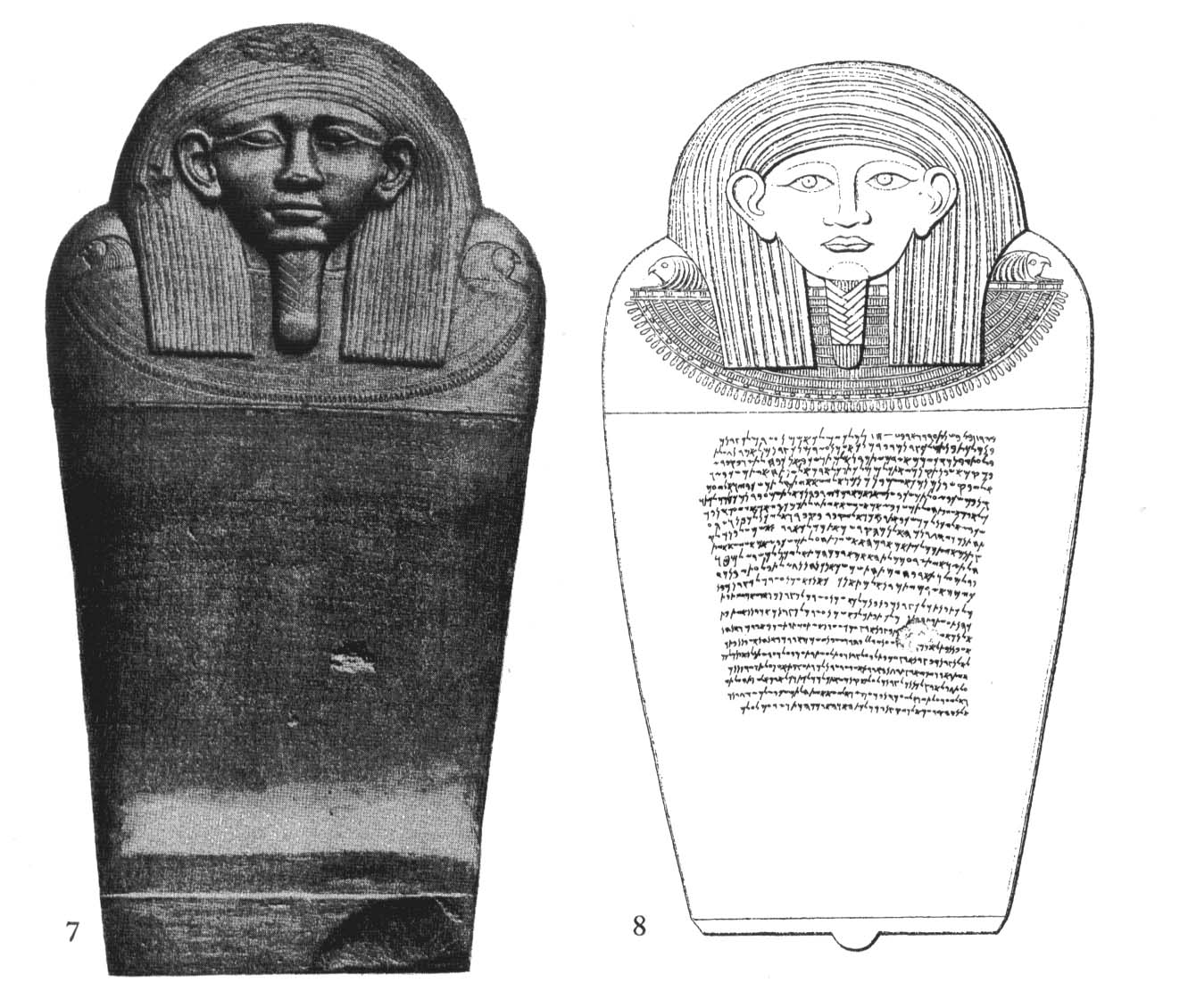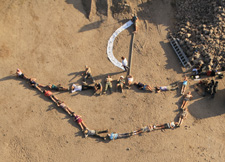Persian period
Historical References
 In his epitaph, Eshmunazar, king of Sidon
records that the 'lord of kings' (the Persian emperor) had given him the cities of
Dor and Jaffa 'and all the rich grain-lands' [or: the lands of Dagon]' between them.
The Persians perpetuated
the imperial strategy of the Assyrians. They, too, needed Phoenician shipping to
bring them luxuries and raw materials from far-off lands in times of peace, and to
ferry their armies in times of war. The competition between the Phoenicians
(and their champions - the Persians) and the Greeks for supremacy over the
Mediterranean, had grown fierce, and resulted in a series of wars - which ended
only when Alexander the great toppled the Persian empire. This competition was not
all destructive, however. It is in this period that the impact of Hellenic culture starts to be manifested in the coastal regions of the Southern Levant.
In his epitaph, Eshmunazar, king of Sidon
records that the 'lord of kings' (the Persian emperor) had given him the cities of
Dor and Jaffa 'and all the rich grain-lands' [or: the lands of Dagon]' between them.
The Persians perpetuated
the imperial strategy of the Assyrians. They, too, needed Phoenician shipping to
bring them luxuries and raw materials from far-off lands in times of peace, and to
ferry their armies in times of war. The competition between the Phoenicians
(and their champions - the Persians) and the Greeks for supremacy over the
Mediterranean, had grown fierce, and resulted in a series of wars - which ended
only when Alexander the great toppled the Persian empire. This competition was not
all destructive, however. It is in this period that the impact of Hellenic culture starts to be manifested in the coastal regions of the Southern Levant.
At Dor, the Persian period marks a cultural change. The town is once again Phoenician, as evident in the building styles; cultic finds, such as figurines; and inscriptions. Remains of the well-built and bustling town, with streets dividing it into insulae, or blocks, are found in all excavation areas. A number of finds attest to the growing importance of Hellenic material culture, including especially imported pottery from Athens.
Archaeological results
Area A
Local phases 6-7: Section of Ir2b - Persian offset-inset city wall is reused in this phase. Earliest evidence for the orthogonal town plan of the Persian - Roman period.
Area C
Earlier Persian Period (local phases 6/C0, 5a/C1, 6/C2): The sequence of fortifications in area C1 shows reuse of a composite mud-brick and stone offset-inset city wall, first built in the Iron Age. Probes in areas C1 and C0, and a well-preserved part of insula C2 indicate that all three insulae, as well as both street I and street II were already built up in this period, and though facades and inner partitions were shifted, the town plan changed little henceforward -- till the Roman era.
Area D1
 Earlier Persian period remains consist mainly of pits.
Any architecture there may have been was destroyed by the construction of the western wing of
'Monumental Hellenistic Complex'. A section cut in the southern slope, below the dye-installation,
revealed several Iron Age phases, spanning late
IR1 and the IR2 period.
Earlier Persian period remains consist mainly of pits.
Any architecture there may have been was destroyed by the construction of the western wing of
'Monumental Hellenistic Complex'. A section cut in the southern slope, below the dye-installation,
revealed several Iron Age phases, spanning late
IR1 and the IR2 period.
Area G
Local phases 3-4:
The open, possibly public nature of this part of town is evident in the
Hellenistic and
Persian periods. The center of the area
seems to have been an open space throughout these eras and to the east
and south of it were what appear to be residential insulae.
To the west and north, on the other hand, were found massive ashlar
foundations of the facades of large public structures.
Most of the buildings themselves, though, are outside the excavated
area. In the Persian period the open area was riddled with pits,
some containing refuse of purple dye industry.
